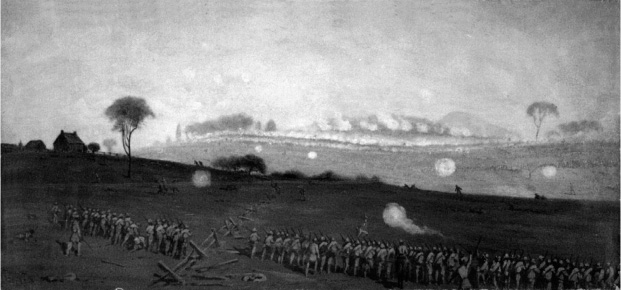Midpoint of the War: May to July 1863Gettysburg: The Third Day |
What was Longstreet’s reaction? |
When Lee informed him, Longstreet replied that in his opinion, there was no body of 15,000 men—regardless of nation or ethnicity—that could cross that open field and take the center of the Union position. Lee answered that this was Longstreet’s task, and he expected him to make it possible.
About the only thing that promised a ghost of a chance was the plan for all the Confederate artillery to unleash a massive bombardment before the infantry assault. All the Confederate field guns were in position by noon. The Union men, meanwhile, were hunkered down in their defensive positions, waiting for some sign as to where the attack would fall (that it would come was not doubted).

Possibly the most tragic event of the already brutal Gettysburg battle was Pickett’s Charge, in which Major-General George Pickett was ordered by Lee to charge the Union’s line under Meade over an open field. Pickett’s commander, General Longstreet, correctly predicted the futility of the charge, which decimated the army and marked the end of the South’s drive northward.
